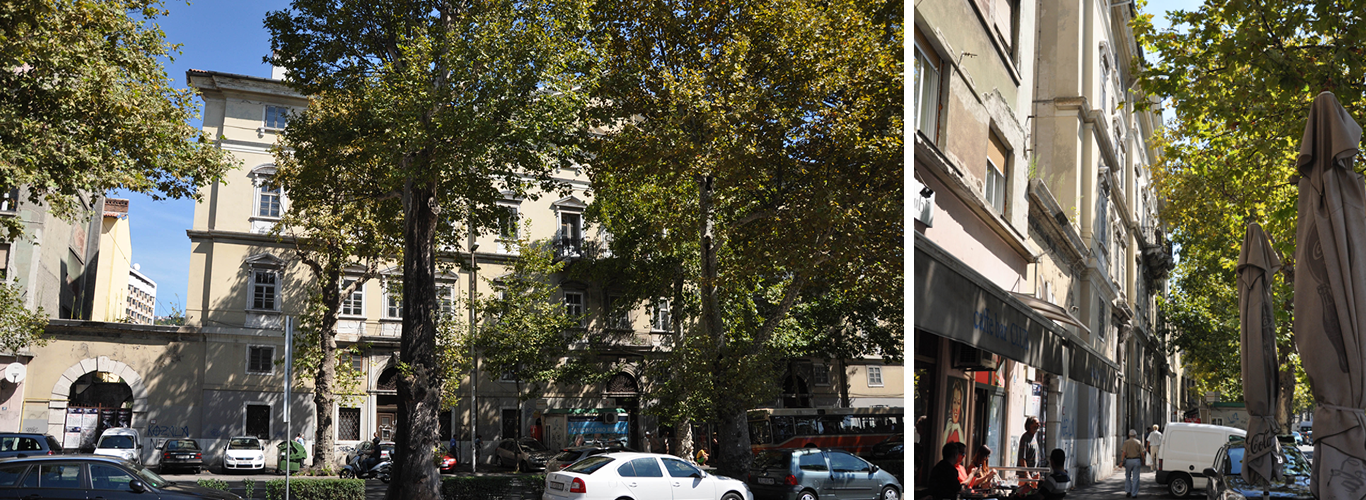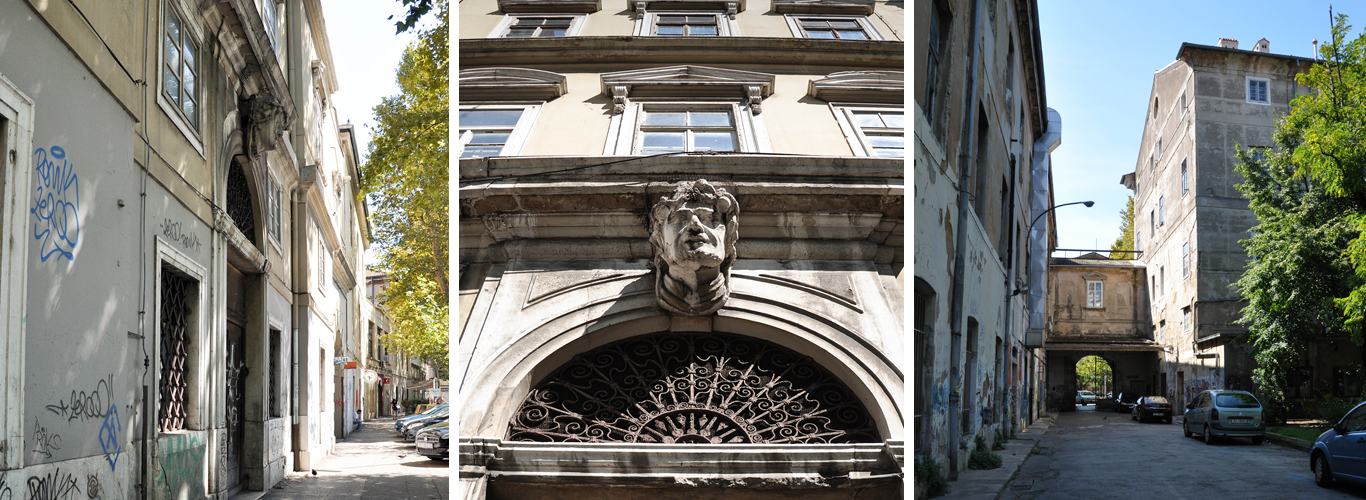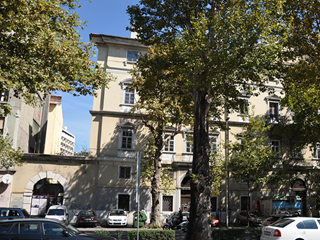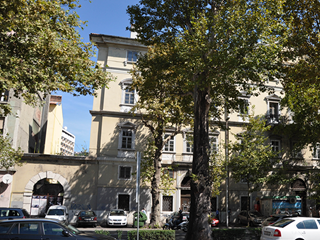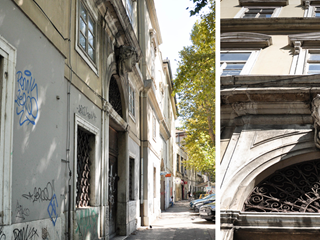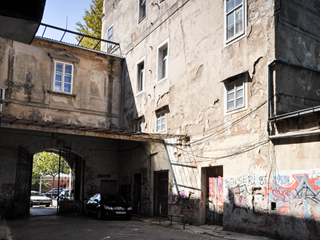The Sugar Refinery Administrative Building
address: Krešimir StreetPeriod: Baroque
Kind: Immovable material heritage
Century: 18
Year: 1786
Purpose: administrative
The Sugar Refinery complex was located along the former sea coast all the way to the old Lazaretto. Today it is situated in Krešimirova Street opposite to the railway station. The complex project was carried out according to plans by the engineer Francesco Saverio Bonome. A magnificent late Baroque palace remained from the former complex, built in 1786. Presumably, its architect was Andrea Menini. The main southern façade has a simple neoclassical composition with three monumental semi-circular porticos. The monotony of the symmetry is interrupted by the windows of the first and second floor with alternating triangular and semi-circular eaves. The spirit of the restless Baroque tradition is most prominent in the winding lines on the balcony of the second floor where the sumptuous piano nobile was located. In spite of the still somewhat minimalistic exterior, the interior of the building, with its carefully selected decoration elements, a playful alignment of pillars and arcatures, as well as details such as fresco cycles and stucco design, evoked a solemn, almost pompous atmosphere.
Rijeka’s Sugar Refinery, also known as Zuccheriera, is associated with the beginnings of the industrial development in Rijeka and the refining of sugar in the Austrian monarchy. The beginning of the Zuccheriera is linked to a trading association in Antwerp, led by Arnoldt Urban and Charles Proli. Although their original plan was to open a sugar refinery in Trieste, after obtaining a permit from the monarchy, the plan was changed and the Zuccheriera opened in Rijeka. The full name of the company was Main Trading Company of Trieste and Rijeka. This was an attempt to further encourage the development of the port of Rijeka. Besides having the right to import and export sugar, coffee, tea and tobacco, the company was also allowed to build their own ships, exploit mineral deposits, cut wood and carry out many other activities. With a decree by Maria Theresa from 1 October 1750, the factory gained many privileges. The privileges, known as “Oktroj”, included a permission to establish a company that was to engage in sugar manufacturing. The company was supposed to be exempt from all customs duties on the import of raw sugar, which was carried out via the ports of Trieste and Rijeka. The monopoly of this privileged company is especially highlighted by the fact that other traders had to procure their sugar directly from the Company. Also, the Company had the right of free ship construction in the shipyards of Trieste and Rijeka and even the material needed for construction was acquitted of all taxes. The workers were exempt from paying serf’s taxes and military duties. Considering the obtained privileges, the construction of a large plant and the administration building of the Sugar Refinery began in the same year, and one of the first managers was the above mentioned Urban Arnoldt. At the time of its foundation, the factory employed about 700 workers. Gradually, the factory grew into a group of companies and it also included some manufacturing plants (e.g. plants for processing wax, wax candles and potash). It had offices and warehouses throughout the Monarchy and abroad: in Istanbul, Thessaloniki, Crimea, Western Europe and America. The facilities of the Sugar Refinery operated from 1750 to 1826 when the company went bankrupt, and the last manager, Leo Johann Massart, born in Gent, Flanders, ordered the sale of the refinery’s movable and immovable property.
From 1832 until 1848, the refinery complex housed the Hungarian Army. In 1851, the Tobacco Factory started its production in the premises.
Valorization:The entire complex of the former Sugar Refinery, or Tobacco Factory, is under the protection of the Conservation Department. It is currently under restoration, and upon its completion, the complex should contain cultural institutions (library, the City of Rijeka Museum and the Museum of Modern and Contemporary Art).
Bibliography:
Bičanić, Rudolf, Doba manufakture u Hrvatskoj i Slavoniji 1750. – 1860., Jugoslavenska akademija znanosti i umjetnosti, Zagreb, 1951.
Dmitrović, Saša, Mala povijest duhana u Rijeci, Sušačka revija, godina V., broj 18/19, Klub Sušačana, Rijeka, 1997.
Glavočić, Daina, Riječka industrijska arhitektura bivše Šećerane i Duhanjere, I. međunarodna konferencija u povodu 150. obljetnice Tvornice torpeda u Rijeci i očuvanja riječke industrijske baštine, Pro Torpedo, Rijeka, 2003.
Lukežić, Irvin, Nizozemci u Rijeci, Sušačka revija, godina XI., br. 41, Klub Sušačana, Rijeka, 2003.
Majer, Krasanka; Puhmajer, Petar, Palača šećerane u Rijeci, Grad Rijeka u suradnji s Hrvatskim restauratorskim zavodom, Rijeka, 2008.

